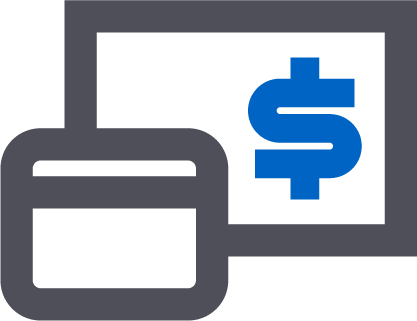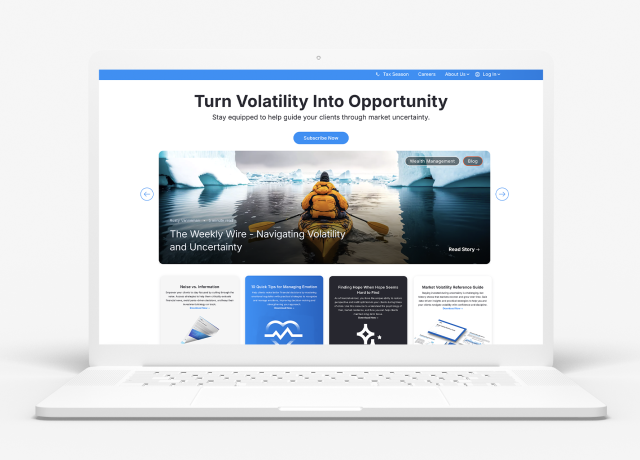What’s Going on with the Dollar?
A string of alarming headlines has sparked renewed anxiety about the U.S. dollar’s future. Warnings like “Dollar Exit Could Be Crowded for Some Time”, “Ailing Dollar Softens Europe’s Hit from Any Oil Shock”, and “How Trump's Trade War Has Shaken the Dollar” have painted a bleak picture of the world’s benchmark currency.
Recent dollar weakness has been driven by shaken confidence in US markets, including trade tensions, a widening debt problem, and heightened market volatility. With the dollar hitting a three-year low, questions have emerged about whether the world’s benchmark currency is at risk of losing its dominant status—or even collapsing altogether.

Source: FactSet
While short-term weakness is justified, a doom and gloom scenario that strips the dollar of its reserve status¹ is extremely unlikely.
Even with recent slippage, the world still runs on dollars. Since the 2008 global financial crisis, the dollar has been in a long-term strengthening cycle. Its foundational role in the global economy wasn’t granted by government decree, it’s the product of decades of market confidence, institutional depth, and relative economic stability.
The dollar has filled this role for decades not because it was imposed on the world, but because global markets gradually bought into the merits of the U.S., a process that began after World War I and accelerated after World War II.
Why is the Dollar King?
The dollar’s dominance is rooted in structural advantages that few other currencies can match:
- Massive capital markets: The U.S. Treasury market remains the world’s deepest and most liquid, with over $900 billion in daily trading volume and more than $27 trillion in Treasuries outstanding as of 2024.²
- Attractive to foreign investors: Trillions of dollars have flowed into U.S. stocks and bonds over the past several decades.
- Global trust: The dollar reflects not just economic heft, but confidence in U.S. institutions—an independent central bank (the Federal Reserve), a stable legal system, and a democratic government.
- Ubiquity in trade: Most global commodities, including oil, gold, food, and raw materials are priced in dollars. International trade contracts, especially those involving developing economies, are often dollar denominated.
- Risk-free benchmark: U.S. Treasury yields serve as the “risk-free” rate underpinning global investment models.
Put simply: no other currency offers this combination of size, stability, and accessibility.

Rival Currencies Underwhelm
While speculation about alternatives to the dollar flares up during moments of stress, none has emerged as a viable replacement.
- The Euro has a substantial global presence, but it’s hamstrung by the EU’s fragmented governance, smaller capital markets, and uneven economic performance across member states.
- The Japanese Yen suffers from decades of low growth, the developed world’s largest debt-to-GDP ratio, and limited international reach.
- The Chinese Yuan is gaining momentum, particularly through China’s “Belt and Road Initiative.” However, it still accounts for less than 5% of global transactions. Its government bond market remains illiquid and largely closed off to foreign investors, and its monetary system is tightly controlled by an authoritarian state.
Some nations have explored currency blocs, most notably the BRICS countries³, but proposals for a joint currency face steep barriers. A lack of fiscal unity, steep political differences, underdeveloped bond markets, limited capital mobility, and a shortfall of international trust have kept the idea conceptual in nature.
Digital currencies including Bitcoin, Ethereum, and central bank digital currencies, offer innovation, but not replacement. Cryptos are far too volatile to serve as reserve assets. Stablecoins like USDC or USDT attempt to solve for the volatility issue but still rely on the dollar itself as a peg, thus theoretically strengthening the dollar. Even China’s digital yuan or the Fed’s “FedNow” initiative are enhancements to fiat systems, not threats to them. The world remains structurally wired for dollar-based trade and finance.
Cutting Through the Noise
The dollar’s role as the world’s reserve currency is secure for the foreseeable future. While the U.S. does face real challenges such as ballooning debt, trade friction, and geopolitical rivalries, these are not existential threats to dollar dominance.
Exchange rates fluctuate based on a wide array of factors, and the recent “Sell America” sentiment may reflect temporary positioning more than permanent realignment.
A European resurgence or expansion of China’s influence doesn’t need to come at America’s expense. Global markets can evolve without upending the dollar-centric system that underpins modern finance.
To be clear: U.S. trade policy has unsettled allies and tested trust. But capital is sticky, and the institutions surrounding the dollar remain the most liquid, accessible, and trusted in the world. Any global move to sidestep the U.S. would require an extraordinary shift in confidence and infrastructure…not just timely headlines.
Since 1776, betting against the United States has rarely paid off. Today’s climate is no exception. In short: the dollar isn’t going anywhere.




























